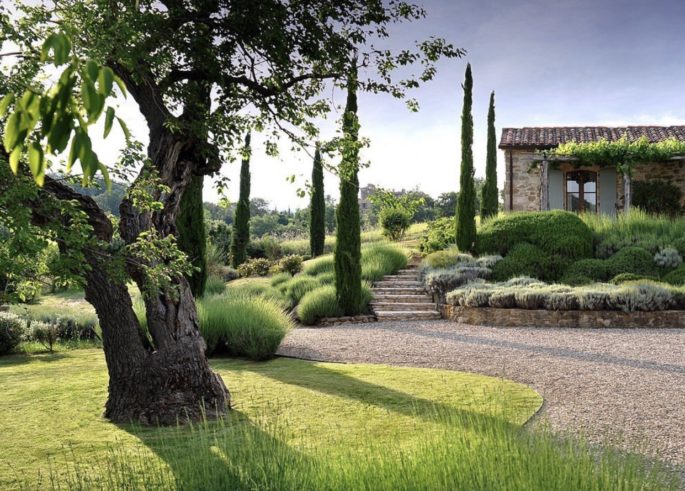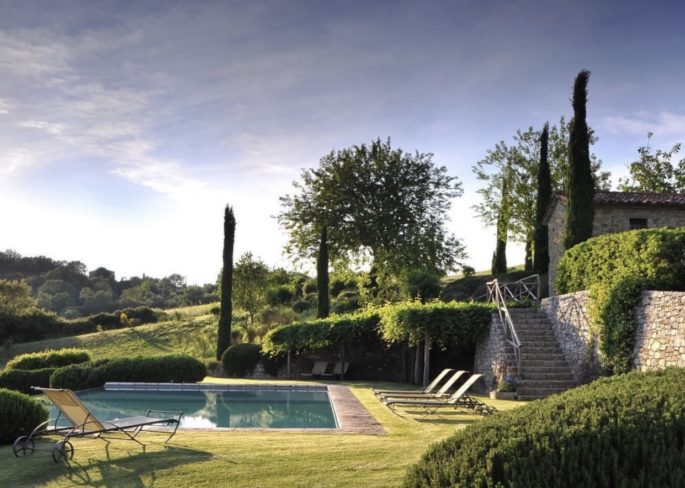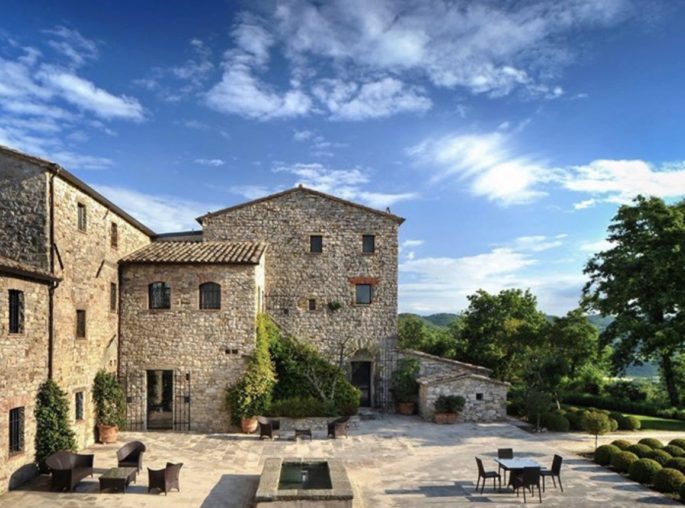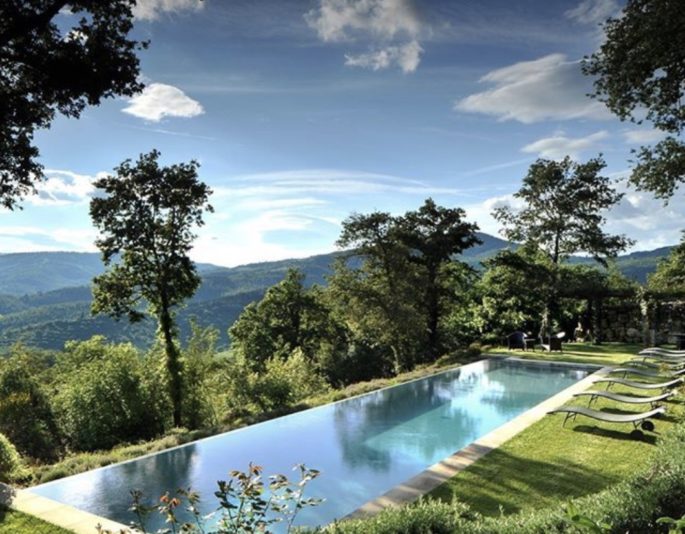As we isolate in our homes, we become increasingly aware of how our interior spaces affect our moods, our ability to work and our physical comfort. And in this moment of being homebound, while we need our interior spaces to be flexible to accommodate temporary activities, more importantly, we need to enjoy the space regardless of what function it serves. Read more, ‘We Can’t Go Back To Normal- How Coronavirus Will Change Home Design.’
Houses have the power to bring joy and a meaningful connection to our physical world.
This week we weigh in on how the house and interior design industry will evolve in a post-pandemic world. The allure of gazing into a crystal ball isn’t so much about seeing the future of design as it is about knowing how to prepare for it. Expect an honest picture of a vastly changed yet enduring industry.
At the core of the new design ethos is simplicity. We see people appreciating simpler lifestyles, being more creative, and innovative, whether at home or in life, now more than ever in a world that’s so complex. This pandemic serves to remind us how important our houses are to our daily well-being. Read more, ‘How Previous Pandemics Impacted Home Design.’
Interior designer Stanley Sun, one of the founders of Mason Studio, believes like many industry experts that the current Coronavirus crisis will impact how we design spaces in the future. We will design our homes with new awareness of personal safety concerns. We will think about the science of light, and the physiological and psychological response people have to light.
We will delight in natural daylighting, quality materials, healthy indoor air quality, and access to livable outdoor spaces.
In many ways, this analogue moment is a return to simple living, and in designing future homes, we will think more about what is essential to the experience of how we want to live. To slow down is to succeed. Here are the ways experts think interior design practices and domestic spaces will change as a result of today’s quarantine culture.
1. We’ll combine our virtual and physical environments
Currently, there are primarily physical environments and virtual spaces, Sun says from his firm’s Toronto headquarters. Video conferencing is making people more aware of how they are perceived, and spaces in the future will be designed with that in mind. Muffled or reverberating sound, harsh or inadequate light will be considerations as we inhabit virtual spaces. Read more, ’10 Tips For Remaking Your Space While You’re Homebound.’
2. Space planning, circulation, and programming will include physical distance measures
Amenity spaces in apartment buildings will be designed to allow groups to separate from each other. The way in which we look at comfort zones in social environments will begin to expand, creating a visual shift in how our interiors function. Read more, ‘How To Clean Your Home For Coronavirus.’
3. The influence of mental and physical health in design will increase tenfold
The importance of interior design and mental and physical health will become more prevalent than ever. Designers will need to consider how we can assist in mental health through interior environments, using lighting, materials, sound, and acoustics. In homes, spaces will become more flexible. We will have to consider what elements of design we can use to protect the public’s health, including materials, distancing, physical separation or proximity, and interaction with objects,” says Sun. Read more, ‘Tablescapes: Elevating Dinner At Home During Isolation.’
The importance of interior design and mental and physical health will become more prevalent than ever.
4. As the connected economy acclimatizes, offices in homes will no longer be an afterthought
Residences will no longer have a home office, but an office at home. Significant reconsideration of how we can create a beautiful, functional office at home will be designed and set up to accommodate full-time satellite workplaces. “This may be challenging in smaller spaces, where the office is often just a desk in a corner,” Sun says.
5. Product Development
“We know from prior challenging times that when the going gets tough, be creative,” says Scott Hudson, CEO of Henrybuilt. “There isn’t going to be a lot of surplus capital to work with for most companies, so product development may slow down. But designers thrive in constrained situations like this. I wouldn’t be surprised if some of the best work done in a long time happens in the next couple of years.”
Brands that depend on retail will need to continue developing their core product. Catherine Bailey, creative director and co-owner of Heath Ceramics, says her company relies heavily on its four brick-and-mortar stores; its revenue dropped overnight by 85% when they closed. “Demand and customers will be changed when we reopen,” she says, adding that production facilities will be leaner, teams will be smaller, and product offerings will be simpler—a trend that could be seen across the board
“I wouldn’t be surprised if some of the best work done in a long time happens in the next couple of years.”
6. Pricing
Holly Howard, founder of the business consultancy Ask Holly How, has two words for creatives who are considering lowering their prices: Be careful. “Much of the wealth—especially the customer base that a lot of designers serve—has not disappeared,” she says, underscoring that affluent individuals will maintain a high level of wealth and will spend accordingly. “Most developers will see a future full of opportunities when the landscape clears of businesses that didn’t survive. Where there will be a struggle around pricing and money has more to do with relationships over the actual ability to invest.”
“Pricing your services is not just determined by what the industry standard is or what the market will bear—it’s also about perceived value,” Howard says. “That’s what I see the design community struggling with understanding how to translate the impact of their work to a dollar amount that resonates with their consumer.”
A more pressing issue will be designers’ ability to justify their services’ worth in a meaningful way.
7. Client Spending
Post-pandemic consumption looks hopeful to financial advisor Jared Miller, who shepherded many design firms through the 2008 financial crisis. “Interior design is a discretionary item, something easy put on hold,” he says. “But as soon as there is some certainty—and in this case, certainty means the sense that there is a vaccine—things will start to calm down. They always do.” He anticipates a “pent-up demand” for design services. “There will be a surge in purchasing once the economy is back,” Miller says. “A lot of the purchases that would have been made—plus all of the purchases that would normally have been made—are still going to happen.
8. Space Planning
We must arrange our homes in such a way as to make it easy for us, and that they support us. Katie Saunders, founder of Pop and Grey, a brand design and strategy firm for interior designers, thinks people will want to invest in their residences more than ever. Suddenly the little annoyances they’ve overlooked for years will become big things that must be fixed now—and they’ll be willing to pay a premium to have it done right.
The post-COVID client will be more attuned to flaws in their homes after spending such a long time locked up in them.
9. Colour Trends
In order for a colour to gain traction and popularity, it first has to accurately reflect consumer attitudes. The pandemic has understandably spurred a feeling of unrest, grief, and anxiety among consumers, who are now craving colours that instill a sense of reassurance and comfort. Even as shelter-in-place orders lift, she continues, consumers will take a closer look at their homes, how they function, and how they can transform them into a sanctuary in these uncertain times. Expect to see more biophilic design- a gravitation toward hues that mimic the sensation of being in nature, eatthy, natural shades—in city-dwellers’ spaces in particular. These colours promote internal peace in an age where mental and physical well-being is critical. Read more, ‘Decorating With Colour: A 4-Step Guide.’
10. Natural Light
When you are feeling locked inside your mind, an ability to look outwards and see that the world is still in motion is reassuring if not essential. Clear away fussy window treatments or external planting that might block views, keep glazing clean, and make sure you open curtains and blinds to greet the day every morning, whatever the weather.
Daylight triggers hormones, that are the body’s natural happy-maker.
11. Studio Operations
In day-to-day internal activities, design firms will lean on their coworkers and community. As designers and design professionals, are accustomed to putting humans and their needs first. In this brave new world, we’ll see that the skills and abilities design affords to us—empathy, curiosity, patience, common sense, problem-solving—are more crucial than ever.
12. Workspace
Offices will undoubtedly transform in the near and distant future. Offices may evolve to become more intentional, meaning that much of the heads-down work will happen at home and the physical workplace becomes a place to connect with others, leading to increased social space, amenities, and conference rooms. It looks like the physical office is here to stay. Office culture will remain an integral part of the employee experience for most companies. Interior designers can specify materials that are non-porous, easy to clean and reduce the likelihood of infection, but the safest workplaces will be those that follow the guidelines of local health officials. An integrated approach of policies, operations, and personal responsibility will be required. Read more, ‘How To Work From Home If You’ve Never Done It Before.’
13. We Must Want to Spend Time in our Homes
Covid-19 has shown us you want to operate from a solid foundation of contentment and happiness at home. Life today is unpredictable. You will make everything in life much easier if you have your home on side to support you. Covid-19 is showing us work had largely taken over our lives, but you can get more done when you work less. By seeking out rest, we get more out of life, are more effective, and more creative. To this end, the focus in our homes will be on our main living spaces, from the perspective of their private use. Because it’s when we get them right and we have them to ourselves, we can take the most advantage of them to relax, live, doze and be. And this more than anything is how to create a happy, productive home.
By seeking out rest, we get more out of life, are more effective, and more creative.
14. Keep it white
The exercise of whiting out walls before beginning decorating serves an additional purpose for someone struggling with mental health issues. Beyond conveying a feeling of brightness and lightness, it can also be viewed as a metaphor for yourself, a blank canvas to be gradually filled in as you discover what you want to be.
15. The New Heart of the Home
The true heart of the house is the hallway…the link between all zones. This is followed by your living room in terms of importance. The kitchen is often referred to as the heart of the home, which has led to more ostentatious cooking spaces flowing unbounded into living areas. While it’s great that kitchens have been getting as much attention as the rest of the house, during quarantine we are discovering the dining table is the pivotal piece of furniture in the happy home, followed only by your sofa and your bed. Sharing a home is an agreement to be connected, share stories, and to gather around a table – the ultimate symbol of communion is the only truly authentic way to do this.
Summary
Designers are realising people are choosing to surround themselves with textures that thrill, scents that rouse, and sounds that soothe. With room to breathe and room to think people want to live a more meaningful life. And we know the types of rooms we choose are not necessarily a physical space. But the extraneous alongside the feeling of liberation that comes with realizing you have enough. Everything doesn’t need to be perfect before we enjoy it. People are letting go of the expectations that their homes will ever be complete. Change is inevitable and the more flexibility you can adapt to it, the healthier and happier you will become as the tastes and passions of each member of your household change, so too your home must evolve. People are taking charge of the place in which they live, it is a great place to start.






